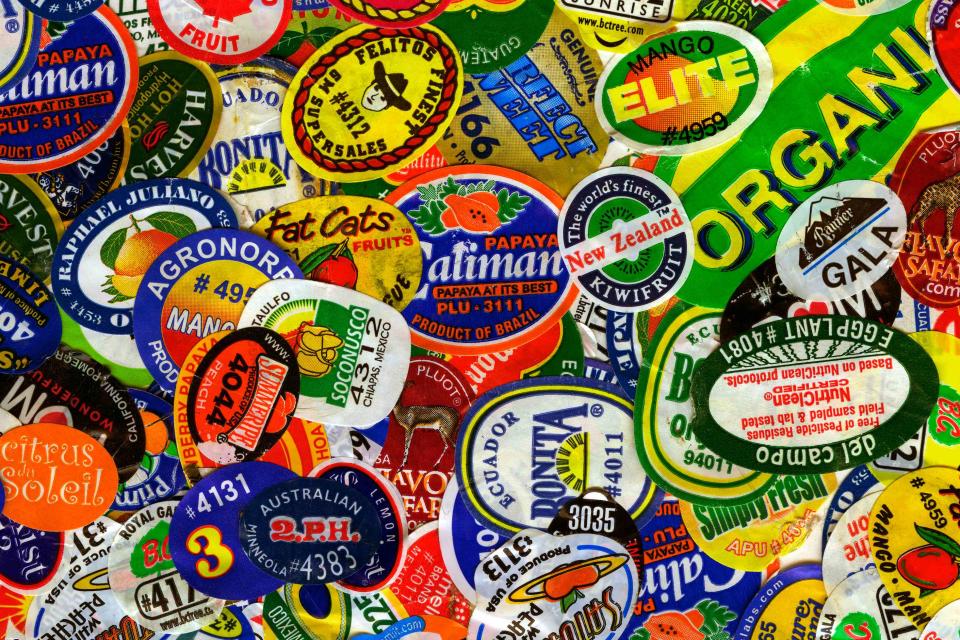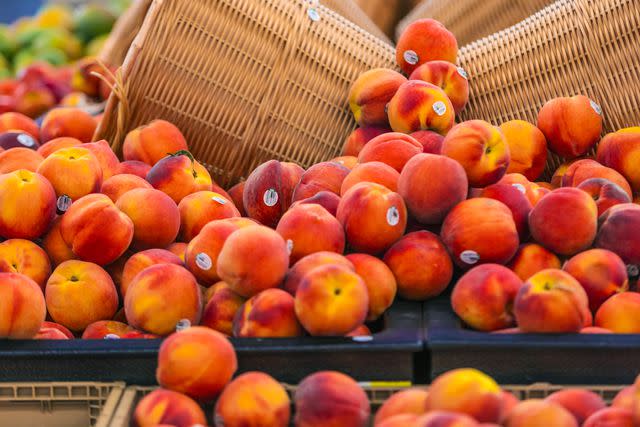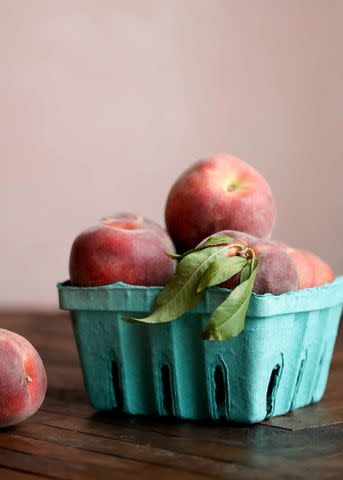Is It Safe To Eat the Sticker on Fruit? Here's What the Experts Say
Here's what the stickers on your fruit mean. Plus, a surprising fact about whether they are compostable or not.

Simply Recipes / Getty Images
Weekday mornings are hectic for me. Most days, I grab an apple or pear from the fruit bowl, and off I go to the office. I often don’t have the time to cut them into slices for packing into a container.
When I finally settle at my desk for a bite, I realize the sticker is still on the fruit—I wouldn't be surprised if I've thoughtlessly eaten my share of stickers.
Is peeling off the sticker actually necessary? And what about all those stickers I probably ate? Will they make me sick? I spoke with two food scientists to get their input.

Jorge Villalba / Getty Images
What the Stickers on Fruits and Vegetables Mean
The small sticker on the fruit and other whole produce is called Price Look-Up (PLU) codes. “These PLU stickers contain barcodes that identify the type of produce, variety, size, and how the product was grown (i.e. conventional, organic, genetically modified) at the point of sale,” says Lara Tiro, food scientist and consultant at Rebel Botanica Inc., a Vancouver-based food product development consulting company.
According to Tiro, the International Federation for Produce Standards (IFPS) assigns and regulates over 1,400 unique codes for vegetables and fruits.
Conventional produce has a four-digit number that starts with a 3 or a 4. Organically grown produce comes with five-digit numbers that begin with a 9 plus the 3000 or 4000 series number. “For example, the standard yellow bananas from a store in Seattle or those sold in London, U.K. will have the same PLU 4011 or PLU 94011 for organically grown bananas,” explains Tiro.
“The embedded numbering system [also] indicates the country of origin of the produce,” says Brian Chau, food scientist and principal of Chau Time, a San Francisco-based food consultation firm focused on research and development. He adds, “The sticker also provides the branded logo and name of the company.” The PLU stickers provide essential information for merchants, supply chains, and consumers.
What Are the Stickers Made Of?
Chau and Tiro both share that the PLU stickers are made with Food and Drug Administration (FDA)-approved food-grade adhesives, paper or plastic substrates, and ink. Since the stickers are in direct contact with raw vegetables and fruits, all three components must meet the FDA’s food-safety requirements.

Are All Fruit Stickers Edible?
While the stickers are intended for identification purposes, eating them intentionally or accidentally on occasion won’t make you sick. This is because the stickers are made with substances that are generally recognized as safe (GRAS) by the FDA. Just don’t expect them to offer any flavor or nutritional benefits. Tiro says, “The stickers are bland.”
For young children, these stickers could potentially be a choking hazard. Since there isn’t any good reason to eat the stickers, remove them before eating the fruit.
Are PLU Stickers Compost-Friendly?
Although produce stickers are made with food-grade materials, according to the United States Department of Agriculture (USDA), they aren’t biodegradable and therefore are not compostable. Tiro explains, “Individually, each component that makes up the sticker is biodegradable; however since they are a composite of the materials, they become non-biodegradable when combined.”
Research supported by the USDA is underway to create compostable produce stickers. Until then, I will make a conscious effort to remove and discard the sticker before tossing the fruit or its peel into my compost bin.

